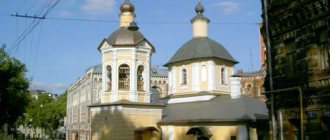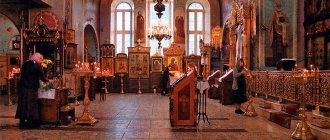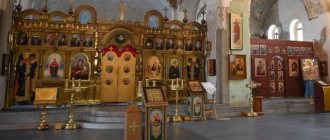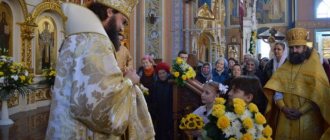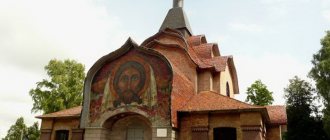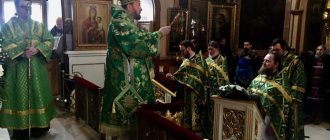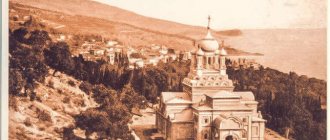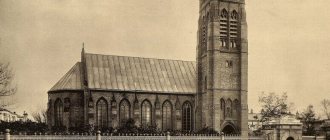Catholic churches differ from Orthodox churches in certain rituals. Latin, Eastern liturgical and other Western - they all have a place in this faith. The visible head of the Catholic Church is the Pope, who heads the Holy See and, of course, the Vatican in Rome. It is worth noting that the history of such architectural monuments as Catholic churches is very rich and varied. Each of them has its own characteristics.
The most famous Catholic churches
The Cathedral of Santa Maria del Fiore is located in Italy, in Florence. At the time it was built, it was the largest cathedral in all of Europe. Today it is the third largest. It is impossible not to note the unique dome, the height of which reaches 91 meters and a diameter of 42 meters. On its facade there is the family coat of arms of the Demidovs, who made a significant financial contribution to the design of this cathedral. St. Peter's Cathedral, which is located in Rome, is also famous. It is the largest Christian church in the world (height - 136 m, length - 218 m). It began to be built in 1506, where there used to be an ancient basilica, where the remains of the notorious Apostle Peter were located. It is impossible not to mention St. Stephen's Basilica, which is the largest temple in all of Budapest. It can easily accommodate 8.5 thousand people. Its total area is about 4730 square meters. m. The plan of this basilica is somewhat reminiscent of a Greek cross. And, of course, the Basilica of St. Adalbert, which is located in Hungary, is widely known. This cathedral is the largest temple in the country and the fifth largest in the world.
Dear friends !
Before you is the exhibition “The Catholic Church as a Phenomenon of Art.” Through books, albums, engravings and lithographs from the collections of our library, we sought to show how the artistic appearance of the Catholic Church developed and changed over the centuries. We wanted to present not only the wonderful architecture of famous cathedrals and the external appearance of more modest churches, but also to show their interior decoration, which is integral to the architectural design of the building. For almost two millennia, Catholic churches were created with one idea - glorifying the greatness of God. Both the external and internal appearance of the temple were subordinated to this idea. Impressive dimensions, magnificent decoration of the outer part, domes, spiers, bell towers - all this influenced the religious feeling of a person. The interiors of the church also contributed to the creation of a state of prayer and filled the soul of the believer with reverence. Tall slender columns directed his gaze upward, streams of unearthly rainbow light flowed through the stained glass windows, beautiful organ music, the voices of clergy and the singing of the choir sounded. The worshiper was surrounded by frescoes, mosaics, paintings and sculptures reflecting the events of the Old and New Testaments, stucco and gilding decorated the walls, he saw wonderful carved altars, colorful vestments of priests and skillfully executed liturgical objects. All these works of art that fill the Catholic church are of great artistic value and are the cultural heritage of humanity. Each of the elements of the temple interior could be described in detail. But the limited space of explication does not allow this. We can only briefly characterize the main architectural styles of Catholic churches that have existed since the advent of Christianity.
In the I-III centuries. The catacombs that are now preserved in the vicinity of Rome, in Naples, in Syracuse, on the island of Malta and in other places served as Christian temples. These were underground caves and corridors in which members of the Christian community were originally buried and where relatives of the dead came to pray. A large number of worshipers flocked to these graves, so it became necessary to expand the underground spaces, connecting several small rooms into one more convenient for worship. The catacombs were illuminated by small lamps attached to the wall, and sometimes by light from holes made in the ceiling. The walls and arches of the corridors had almost no decorations. Only the walls and ceiling lamps of the crypts, which served as the tombs of bishops and martyrs, had picturesque images. At the beginning of the 4th century. persecution of Christians in the Roman Empire ceased: in 313, Emperor Constantine issued an edict on religious tolerance. After Christianity was declared the dominant religion of the Roman Empire, crowded prayer meetings were moved from cramped underground catacombs to spacious basilicas. In 319, construction of St. Peter's Basilica on Vatican Hill begins. According to their status, Christian churches were divided into parish churches and cathedrals (churches where the bishop's chair was located). When the department was abolished and the bishop moved to another place, the cathedral turned into a parish church. Cathedrals not only served as a place for mass, but also as a center for public gatherings; they were called upon to instill fear and respect in the flock, to provide shelter and protection during periods of civil upheaval and internecine wars. The beauty and grandeur of cathedrals were a universal property and contributed to the strengthening of national identity. Grandiose temples personified the greatness of God, symbolized his power on earth and demonstrated the gracious beauty of heavenly life. Traditionally, two architectural types of construction of Christian cathedrals have developed - the basilica and the cross-domed church. The basilica is a simple rectangular building, divided into several naves and ending with a rounded part (apse) in which the altar was located. The portal was opposite the altar, and in the center of the basilica stood a simple dome. Later, the basilicas gave way to a cross-domed church, which has the shape of a Greek or Latin cross in plan (with a longitudinal space elongated in the direction from east to west) and a large dome or spire in the center. From the 7th to the 12th centuries. In Western Europe, the so-called Romanesque architectural style arose and developed. Its canons were formed under the influence of the classical architecture of Ancient Rome. The general impression of stern solemnity and formidable power, which are created both by the size and proportions of the interior of the temple, and by the structural and artistic design of its stone shell, is characteristic of the Romanesque style. The enormous length of the temple enhances the significance of the altar, located at the far end of the church. The insignificant width of the temple compared to the length and height makes a person especially acutely aware of the height of the columns and walls in comparison with his own height. An excellent example of the Romanesque style is the facade of the cathedral in Trier (Germany). The upward thrust of the spiers and towers of the building towards the sky is a constantly recurring motif in all Christian medieval architecture. Replaced by the Romanesque style in the 1100s. Gothic comes. In France alone during the XII-XIII centuries. About 80 cathedrals were built in the Gothic style, which originated in this country and existed in Europe until the 16th century. In Gothic architecture, all three main elements of the composition of a church interior were brought to the highest degree of expressiveness and artistic completion: its space, stone structure and windows. These elements were combined in amazing harmony with each other. The extraordinary artistic power, unity and consistency of the Gothic architectural composition became possible thanks to the invention of a new type of vault, which rested on pointed arches starting from the top of the columns.
The Gothic style was distinguished by a system of buttresses supporting the central nave from the outside, and an abundance of openwork stone details and sculptures. And most importantly, a single space of the temple appeared with bunches of columns, a rose window and a crown of chapels. The light coming through the stained glass windows played a special role in the interior of the cathedral. Starting from the 12th century, the size of cathedrals increased significantly, their interior became lighter, and their decorative decoration became more luxurious. The highest rise of the Gothic style was called “High Gothic”. Its examples are the magnificent cathedrals in Paris (Notre Dame), Chartres, Reims and Amiens. The culmination of this style was the unfinished cathedral at Beauvais. Since the 15th century Gothic began to gradually give way to Renaissance architecture, reviving classical canons. A remarkable example of this style is St. Peter's Cathedral in Rome - the largest church in the Catholic world. At the burial site of the Apostle Peter and a dilapidated basilica (IV century) in the 16th century. construction of a new cathedral began. Construction was carried out successively by Bramante, Raphael, Michelangelo and other architects. It ended only many decades after the death of Michelangelo. The interior of the cathedral is perceived as the highest achievement of human genius. Few churches could compete with the cathedral in terms of the number of masterpieces it contains. Huge mosaics decorate every chapel and every altar of the cathedral. Gilded stucco molding is widely used. Delicate cream, green, pink colors of the mosaic floor complement the sparkling patterned arches and walls. Magnificent reliefs in marble, bronze and wood are found throughout. The cathedral contains elaborate tombstones of the popes.
Renaissance architecture in the 17th-18th centuries. replaced by Baroque art, and later by Rococo. A striking example of Baroque architecture is the lavishly decorated Salzburg Cathedral (Austria). It is built of amber-yellow stone and topped with green copper domes. The cathedral reflected all the luxury, elegance and sophistication of the Baroque. The western façade is especially beautiful. The cathedral is beautifully lit inside. Wonderful frescoes and stucco moldings, coloring the walls and ceiling with all the colors of the rainbow, give the interior a fantastic brightness. One of the most beautiful facades in the Baroque style, where sculpture fills almost the entire surface of the wall, is the Cathedral in Santiago de Compostela (Spain). In the XVII-XIX centuries. The architecture of classicism, oriented towards ancient architecture, is developing. It is characterized by clarity and geometric shapes, logical planning, a combination of the plane of the wall with an order and restrained decor. Very often, the creators of temples combine different styles in their creations. For example, the Basilica of Superga near Turin (17th century) combines elements of Baroque and Classicism. And the Church of St. Charles Borromean in Vienna (XVII-XVIII centuries) is Baroque and Rococo. In the 20th century Church construction has undergone significant changes. Some architects revive the traditional forms of previous centuries; others mix styles, create many new original and varied forms, using modern technologies and materials. Thus, the Church of the Holy Family, built by the famous Spanish architect A. Gaudi in Barcelona, is the first in a series of completely new churches. This main creation in Gaudí's life looks almost Gothic and at the same time belonging to our time. The temple is perceived as the creation of an unknown sculptor who hand-sculpted the House of God from clay or wax. Another example is the ultra-modern cathedral in Brasilia (Brazil), built in the second half of the 20th century. architect O. Niemeyer. The cathedral was built of glass and reinforced concrete, has a circular shape in plan, the composition of the temple itself symbolizes the crown of thorns of Christ. In the interior, large sculptures of angels seem to float in the air, lifted up by skyward supports.
Moscow Cathedrals
The Roman Catholic Church, located in Moscow, is the largest Catholic cathedral in all of Russia. It has a capacity of five thousand seats. Tomas Iosifovich Bogdanovich-Dvorzhetsky, the architect of the temple, created a truly masterpiece. The construction of this cathedral took place from 1899 to 1917. The temple itself was consecrated in 1911. It should be noted that in 1938 the cathedral was taken away from the Catholics. It was completely returned in 1996. This temple is a neo-Gothic three-nave cruciform basilica. This is a cathedral where masses are held in different languages. This includes French, English, Polish, Russian, Spanish, and even Latin. It should be noted that they even hold Tridentine holy masses and services in accordance with Armenian rites. This church has one of the largest organs in all of Russia.
Vladivostok: Church of the Blessed Virgin Mary
Church of the Blessed Virgin Mary. Photo: syngach / photobank “Lori”
And here we teach you to understand the main architectural styles
Initially, it was planned to build the Church of the Blessed Virgin Mary according to the design of the Vladivostok architect Alexander Gvozdzievsky. But his idea turned out to be expensive, so the construction committee announced a competition.
In 1909, the Far East newspaper published a note about the winner, architect Vladimir Planson. Sketches of the interior were prepared by Warsaw artist Josef Szpetkowski. The church was built in the Eastern European Gothic tradition: with pointed spiers, vertical projections, carved pediments, stained glass windows and vaulted ceilings. In 1921, the temple was consecrated, although Plançon’s plan was not yet fully realized. The bell tower was installed here only in 2010.
In 1996, the first organ concert in the history of the Far East was played in the temple. Since then, organ and vocal-choral performances have been held here regularly. In 2015, a wind organ was built specifically for the temple in the Philippines - its external decoration resembles the facade of the Church of the Blessed Virgin Mary.
History of the temple
If we talk about Catholic churches, as well as their history, it should be noted that this cathedral is associated with very interesting facts. This temple was allowed to be built only far from the very center of the capital and other significant churches. It was also forbidden to erect sculptures and towers outside the building. A little earlier it was said that the temple was taken away from Catholics in 1938. Then it was plundered and a dormitory was turned into a sacred place. It should be noted that the Second World War also affected the church: due to bombing, several spiers and turrets were destroyed. In the spring of 2002, the temple was involved in praying the Rosary with Pope John Paul II and Catholics from different parts of the world. And in 2009, on December 12, the cathedral celebrated ten years since it was renovated. A year and a half later, on September 4, 2011, the centenary of this stunning building was celebrated magnificently.
The further fate of the temple
This Catholic church on Gruzinskaya Street is never empty. It organizes catechesis, various youth meetings, music concerts that take place as part of some charitable events, and much more. The church shop, the library, the editorial office of the now famous magazine called “Catholic Messenger - Light of the Gospel”, the office of a Christian charitable organization, funds - all this belongs to the Church of the Immaculate Conception of the Blessed Virgin Mary.
Samara: Temple of the Sacred Heart of Jesus
Temple of the Sacred Heart of Jesus, Samara. Photo: Natalya Ilyukhina / photobank “Lori”
In 1901, the St. Petersburg magazine “Zodchiy” published a design for the Catholic Church of the Sacred Heart of Jesus, which was also created by Thomas Bogdanovich-Dvorzhetsky. The red brick neo-Gothic building was erected in 1906. It was decorated with spear-shaped pinnacles - a stained glass window with the Virgin Mary above the entrance and golden stucco inside. Inside, they installed “a magnificent organ, imported from Austria and costing about 5,000 rubles,” as the Voice of Samara newspaper wrote in 1906.
In the 1930s the temple was closed. It housed a children's theatre, a local history museum, a theater technical school and a construction club. In 1991, the building was returned to the Catholic parish. It was restored and crosses were installed on the spiers.
Today, the Temple of the Sacred Heart of Jesus in Samara is included in the UNESCO cultural heritage list. Organ and classical music concerts are held here, there is a library, a Bible study group and the editorial office of a Catholic newspaper. In the altar of the cathedral there is a fresco "Christ of St. John of the Cross", a copy of a painting by Salvador Dali, and the main shrine of the temple - the relics of Martin de Porres, a Peruvian clergyman of the 17th century. He was the first black American to be canonized.
Temples of St. Petersburg
There are quite a lot of different churches in Moscow, which we could talk about for a long time. But the Catholic churches of St. Petersburg deserve special attention. For example, the Church of St. Stanislaus. The building itself was built in 1823-25 on the corner of Masterskaya and Torgovaya streets. The Catholic Church of St. Stanislaus was built on the very spot where the garden plot and the house of the metropolitan named Stanislav Bogush-Sestrentsevich were located. He received his name precisely in memory of him. It is worth noting that today there is a spiritual library next to the temple. This building is the second Catholic Cathedral of the city of St. Petersburg. Before him, only the Church of St. Catherine existed. Despite the rather modest size of the cathedral, the parish grew rapidly. By 1917, the number of parishioners exceeded 10 thousand people.
What's nearby
The temple is located on the main tourist street of Istanbul - Istiklal, nearby is the Galatasaray Lyceum, the French Palace and several indoor galleries - passages, including a flower one.
Location on the map
Address: İstiklal Cd. No:171, 34433 Istanbul, Türkiye.
How to get there
From Sultanahmet Square you can take the high-speed tram (Karaköy stop), then transfer to the Tunnel and walk from there, or take the historic T2 tram (Galatasaray stop).
From Taksim Square you can also walk or take a ride on a retro tram.
Differences between Orthodox and Catholic churches
This topic is quite popular in Christianity. It is worth noting that Catholic and Orthodox churches have both similarities and differences. The first and most important similarity is that adherents of both faiths are Christians. Everyone knows this. Catholic churches differ from Orthodox churches both in their appearance and in their generally accepted rituals. Their understanding of the Church and its unity is somewhat different. The Orthodox share the sacraments and faith, but Catholics also consider it necessary to have a head - the Pope. The Catholic Church believes that the Holy Spirit proceeds from the Father and the Son, as confessed in the Creed. In Orthodoxy it is a little different. They confess the Holy Spirit, which comes only from the Father. In Catholicism, the sacrament of marriage must be for life - divorce is prohibited. But the Orthodox Church in some cases allows divorce.
Catholics also accepted the dogma of the Immaculate Conception of the Virgin Mary. And this means that even original sin supposedly did not touch her. Orthodoxy glorifies the holiness of the Mother of God, but believes that she was born with original sin, just like other people.
Similarities between Orthodoxy and Catholicism
It is worth noting that, despite a lot of differences, these two religions are similar to each other. Both Orthodoxy and Catholicism recognize all Christian sacraments, of which there are seven in total. In the same way, they have general norms (in other words, canons) of church life and the main components of ritual: the nature and quantity of all sacraments, the sequence and content of services, the interior, and the layout of the temple. There is one more similarity: services are conducted in national languages. In addition, Latin (as is known, a dead language) is used in Catholic churches and Old Church Slavonic (not used in everyday life) in Orthodox churches. Despite all sorts of differences, Orthodox Christians, just like Catholics, all over the world profess the teachings of Jesus Christ. And here the most important thing to remember: even though people’s prejudices and mistakes once separated Christians, faith in one God still unites us.
Description
The complex is an ensemble made in the same style and consisting of a temple and two five-story residential buildings. The houses were built specifically for rent, and the proceeds go to benefit the temple. The two houses are connected by an arched gallery, the passage through which leads to the courtyard and the temple itself.
Behind the arch there are information stands, and near the steps there is a statue of Pope John XXIII. The head of the Vatican is depicted holding a dove - a symbol of peace.
Important . The Church attracts the lost, heretics, and other people who do not adhere to the Catholic framework of dogma. Since all of them are Christians, representatives of the Catholic clergy allowed them to perform services within the walls of the temple and provided side branches of the basilica for this.
A passage over the arch connects the two houses - a kind of romantic gallery. From Istiklal the arch is more than noticeable and it is very difficult to miss.
